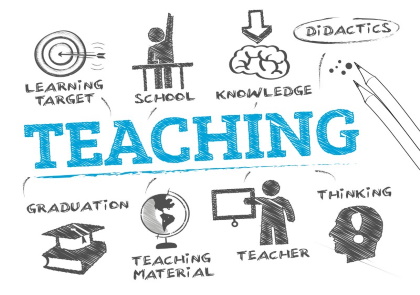I still remember the first class I taught. I had a solid lesson plan, bullet points on the board, and high hopes… but five minutes in, I realized I was losing them. The students were zoning out, staring at the clock, doodling in their notebooks. And honestly? I couldn’t blame them.
That was the day I realized: teaching is more than delivering information. It’s about connection, creativity, and strategy.
Since then, I’ve tried dozens of approaches—some flopped, others clicked beautifully. Today, I want to share what I’ve learned about teaching strategies that actually work, especially for diverse learners and different learning domains.
What Are Teaching Strategies?
Let’s get this clear from the start—
What are teaching strategies?
Teaching strategies are the methods, techniques, and approaches that educators use to help students learn. They’re not just about what you teach, but how you teach it.

From direct instruction to inquiry-based learning, these strategies help tailor your teaching to students’ needs, learning styles, and developmental levels.
When people search what are some teaching strategies, they’re really asking:
“How can I help my students understand and remember what I’m teaching them—in a way that feels meaningful?”
What Are the 5 Teaching Strategies?
Over the years, I’ve found these five core strategies to be super effective across different age groups and subjects:
1. Direct Instruction
This is your classic, structured teaching knowledge—explaining, modeling, and practicing. It’s useful for new concepts or when clarity is key.
2. Cooperative Learning
Group work, think-pair-share, peer teaching. It boosts collaboration, especially when you mix abilities in groups.
3. Inquiry-Based Learning
Perfect for science, project work, and curious minds.
4. Differentiated Instruction
Tailoring content or activities based on students’ levels, learning styles, or interests. Honestly, this one saved me when I had a class with wide ability gaps.
5. Formative Assessment
Using regular, informal checks (like exit tickets or quick quizzes) to adjust your teaching in real-time.
Together, these five cover structure, interaction, creativity, and reflection—all essential in any modern classroom.
Which of the Following Teaching Strategies Is Least Helpful to English Learners?
Now here’s an important one that trips up a lot of educators.
If you’ve ever asked: which of the following teaching strategies is least helpful to English learners?—the answer is typically pure lecture-style teaching without visual aids, interaction, or context.
Why? Because language learners need scaffolding—visuals, hands-on activities, repetition, simplified instructions, and interaction.
When I had three ESL students in a history class, I learned fast that long monologues left them confused and disengaged. But once I added images, paired them with buddies, and used sentence frames?
So, lecture isn’t always bad—but used alone, it’s not great for English learners.
What Teaching Strategies Are Used for the Cognitive Domain?
Ah, Bloom’s Taxonomy fans—this one’s for you.
The cognitive domain deals with thinking, reasoning, and problem-solving. So the strategies that target this domain include:
-
Problem-Based Learning (PBL): Giving students real-world problems to solve. Great for critical thinking.
-
Graphic Organizers: Helps structure thoughts, compare/contrast, or sequence events.
-
Case Studies & Scenarios: Especially useful in business, health, or ethics lessons.
-
Think-Alouds: Modeling the thought process out loud to show how to analyze or synthesize information.
When I taught a unit on media bias, I used news article comparisons, mind maps, and guided debates. You could see the cognitive gears turning—and that’s the goal.
What Are Some Teaching Strategies That Really Engage Students?
Here are a few that have become staples in my classroom:
🎯 Gamification
Turn review sessions into trivia, use Kahoot or Quizlet Live. Students get so into it.
🎭 Role Play or Simulations
Especially useful in history or literature. I once had students roleplay UN delegates—it was chaotic and brilliant.
🧠 Brainstorming Sessions
Great for creative thinking. No wrong answers, just ideas flowing freely.
🖼️ Visual Thinking
Use drawings, concept maps, or even sketchnotes. Perfect for visual learners (and way more fun than taking notes).
The Best Strategy? Knowing Your Students
Honestly, the most powerful teaching strategy isn’t a technique—it’s building a relationship with your students.
Know what makes them curious. What confuses them. What excites them. Then build your strategy around that.
I once had a class obsessed with Minecraft. So I created a geography unit where they had to “build” cities based on landforms and resources. Engagement shot through the roof.
That’s when it really clicked for me: strategies are tools—but students are the blueprint.
Final Thoughts: Mix It Up and Make It Matter
There’s no “one perfect strategy” for every student or subject. The best approach is often a blend—structured when it needs to be, open-ended when it can be, and always focused on real engagement.
So try new things. Reflect, tweak, and experiment. And remember: if your students are thinking, participating, and smiling a little along the way—you’re doing just fine.
From comforting recipes to practical advice, Blessed Beyond Words has everything you need to enrich your daily life. – https://blessedbeyondwords.com
Which of the following teaching strategies is least helpful to English learners?
Lecture-only teaching without visuals or interaction is least effective for English learners.
What are the 5 teaching strategies?
-
Direct Instruction
-
Cooperative Learning
-
Inquiry-Based Learning
-
Differentiated Instruction
-
Formative Assessment
What are some teaching strategies?
Gamification, role play, student-led discussions, problem-based learning, and visual thinking are engaging strategies used in classrooms.
What teaching strategies are used for the cognitive domain?
Problem-based learning, Socratic questioning, graphic organizers, and think-alouds are effective for developing critical thinking and reasoning.


